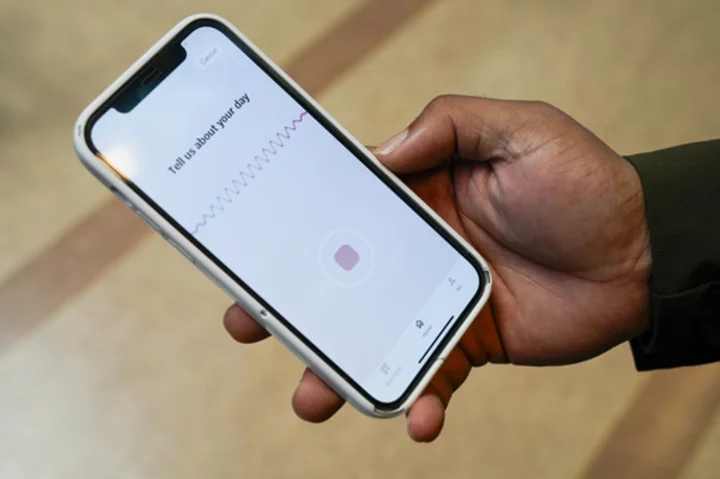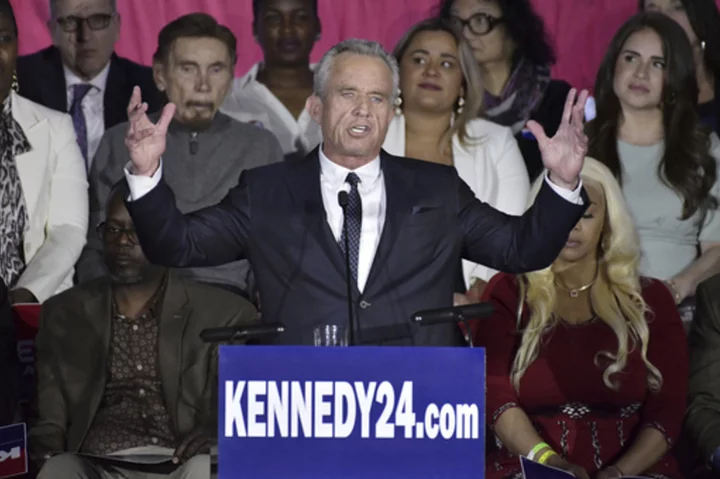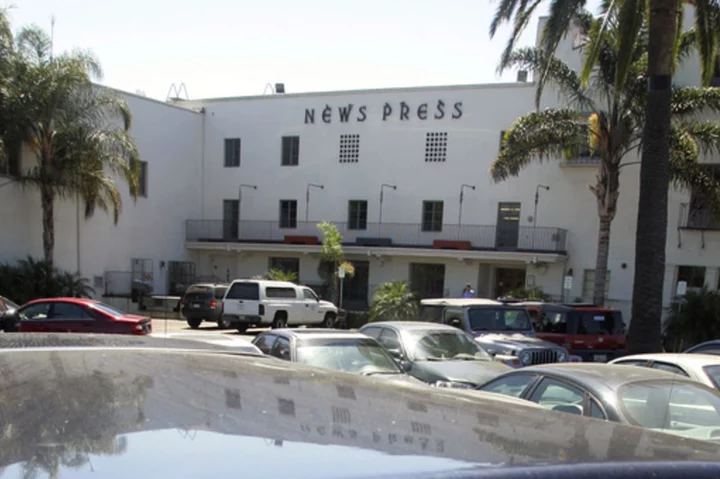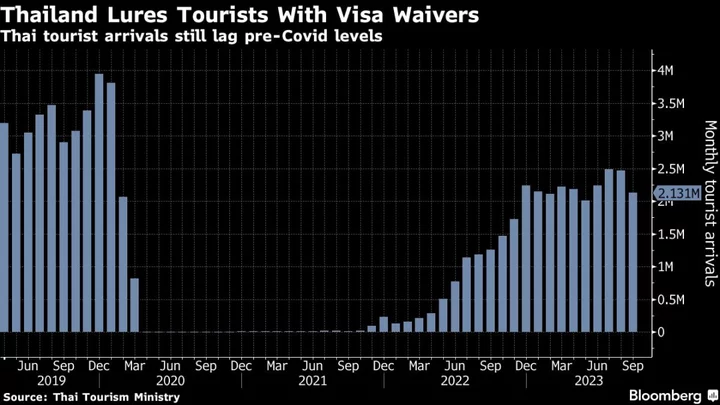NEW YORK (AP) — The Federal Reserve’s decision Wednesday to leave interest rates alone for the first time in 11 meetings raises hopes that it may be at least nearing the end of its rate-hiking campaign to cool inflation.
That said, the Fed's policymakers indicated that they envision potentially two more hikes this year — a more hawkish forecast than had been expected. And even after the Fed has stopped hiking, it’s likely to keep borrowing rates at a peak for months to come. Consumers would still have to bear the weight of higher-cost auto loans, mortgages, credit cards and other forms of borrowing.
Still, some people may feel encouraged by the possibility that loan rates might not rise much more. And in the meantime, people with savings accounts are enjoying higher yields than they have in years. Fortunately, that isn't likely to change anytime soon.
HOW WILL BORROWERS BE AFFECTED BY ALL THIS?
Though the Fed hasn't likely reached the top of its rate-raising cycle, it's getting closer. That doesn’t necessarily mean that relief is on the way, especially with the forecast of possibly two additional hikes this year.
“Even once the Fed stops raising interest rates, borrowing rates are still very, very high,” said Greg McBride, Bankrate.com’s chief financial analyst. “Some of these rates are higher than many consumers have ever seen.”
McBride noted that credit card rates, in particular, are at or near their all-time peaks, mortgage rates have more than doubled in two years and auto loan rates have reached their highest level in about a dozen years. Even if rates were to hold steady, borrowing costs across the economy will remain much higher than they were in recent years. Some consumers may struggle to continue making loan payments on time as they simultaneously face inflated prices for many goods and services.
“That means debt repayment has taken on a renewed urgency,” McBride said. “If you have credit card debt, that is a top priority to get paid down.”
Matt Schulz of LendingTree suggested that consumers who have debt should “assume that rates will continue to rise and focus on paying down their balances as quickly as possible," to err on the safe side.
Card users, he said, might consider asking their issuers to offer a lower Annual Percentage Rate (APR), if possible. In a recent report, LendingTree concluded that a majority of cardholders who had asked their card issuers for a lower rate received one. The average reduction was significant — 6 percentage points.
“It is well worth your time to make that call,” Schulz said.
Right now, the average APR on a new credit card offer is a towering 23.98%, according to LendingTree.
“And they're probably going to still creep higher in the immediate future,” Schulz said, even if the Fed doesn't raise rates Wednesday.
For a typical credit card already in use, the average APR was only slightly lower — 20.92% — according to the latest data from the Fed.
I NEED TO BUY A CAR. WHAT'S THE OUTLOOK FOR AUTO LOANS?
Loan rates for new vehicles have stayed constant for the past few months, at an average of about 7%. That isn't likely to change even with the Fed leaving rates alone for now, said Ivan Drury, senior manager at Edmunds.com. Auto loan rates, Drury said, tend to reflect buyer demand for vehicles more than they do the Fed's interest rate decisions.
Auto sales, while still way below pre-pandemic levels, remain fairly strong, automakers are selling at still-high prices and profits are solid. Unless sales were to slow, companies and dealers won’t likely reduce prices or offer subsidized loan rates.
“Everyone seems too content," Drury said.
With loan rates probably unlikely either to rise or fall significantly anytime soon, buyers who need a vehicle may increasingly come off the sidelines. Autos are generally staying on dealer lots for only 35-40 days before being sold. Until they start sitting for 60 days or more, Drury said, automakers probably won’t cut prices.
New vehicle prices averaged $47,892 in May, 1.3% below the peak in December. Yet any decline has been offset by costlier loan rates, which have surged nearly a half point over the same period.
Prices for used vehicles also dropped somewhat last year but remain comparatively high. The national average in May was $29,387, down about 5% from the May 2022 peak but nearly $9,000 more than the average before the pandemic. (As of May, the average used-vehicle loan rate was about 11%.)
“Make sure your credit is in tip-top shape, shop around for financing and have an offer in your back pocket before you go to the dealership,” said Bankrate's McBride.
WHAT'S LIKELY IN STORE FOR SAVERS?
Ken Tumin, a banking expert and founder of DepositAccounts.com, noted that while yields for savings accounts and certificates of deposit are the highest they’ve been in a decade, the pace of increases is slowing. With the Fed likely nearing the end of rate hiking, any further increases in yields may be comparatively small.
“Banks will have reason to slow their deposit rate increases,” Tumin said.
Still, it's worth noting that these accounts are much more rewarding than they were as recently as a year ago. The average online savings account yield is now 3.98% — up from 3.31% at the start of this year and from 0.73% from a year ago, according to DepositAccounts.com. The average yield on an online one-year CD is 4.86%, up from 4.37% at the start of the year and from 1.49% a year ago.
McBride suggested that consumers comparison-shop to find the best rates on high-yield savings accounts. He noted that online banks, in particular, are paying yields of 5% or better.
“Savings rates are the highest we’ve seen since the financial crisis,” he said. "Banks that need deposits — like online banks — are competing aggressively by paying higher rates.”
By contrast, McBride said, "brick-and-mortar banks, who have a surplus of deposits — their rates reflect that. They will intentionally have lower rates, and some of them have no intention of catching up.”
Overall, he noted, consumers can enjoy savings rates that haven't been this high in 15 years.
“That’s not a bad place to have money parked,” said McBride.
IS THE FED MANAGING TO DEFEAT INFLATION?
The Fed has clearly achieved progress. Inflation, which peaked above 9% last year, is less than half that level now. Yet the latest inflation readings remain well above the Fed's 2% target. Many households are still feeling heavy financial pressure as a result. Reducing inflation back to the Fed's target level will require more time.
“That might mean the Fed is going to have to hold rates higher for longer, and it may even mean boosting rates further in the months ahead,” McBride said.
The central bank has now raised rates at its fastest pace in 40 years.
“That doesn't mean the Fed is going to start cutting rates or that other rate hikes this year are completely out of the question,” said Jacob Channel, senior economist for LendingTree. “It just means they may be willing to hold rates where they are and let the economy continue to settle without more rate-related prodding in the immediate future.”
If the economy does cool, Channel predicts that mortgage rates may end the year closer to 6% than to 7%. (The current national average for a 30-year fixed-rate mortgage is 6.71%, according to Freddie Mac.)
“There's a very significant cumulative impact (of rate hikes), but it doesn't hit all right away,” McBride said. For the Fed to leave rates alone, at least for now, "gives them a little bit of time to evaluate the broader economic and inflationary landscape to see if further rate hikes are warranted.”
___
AP Auto Writer Tom Krisher in Detroit contributed to this report.
___
The Associated Press receives support from Charles Schwab Foundation for educational and explanatory reporting to improve financial literacy. The independent foundation is separate from Charles Schwab and Co. Inc. The AP is solely responsible for its journalism.









